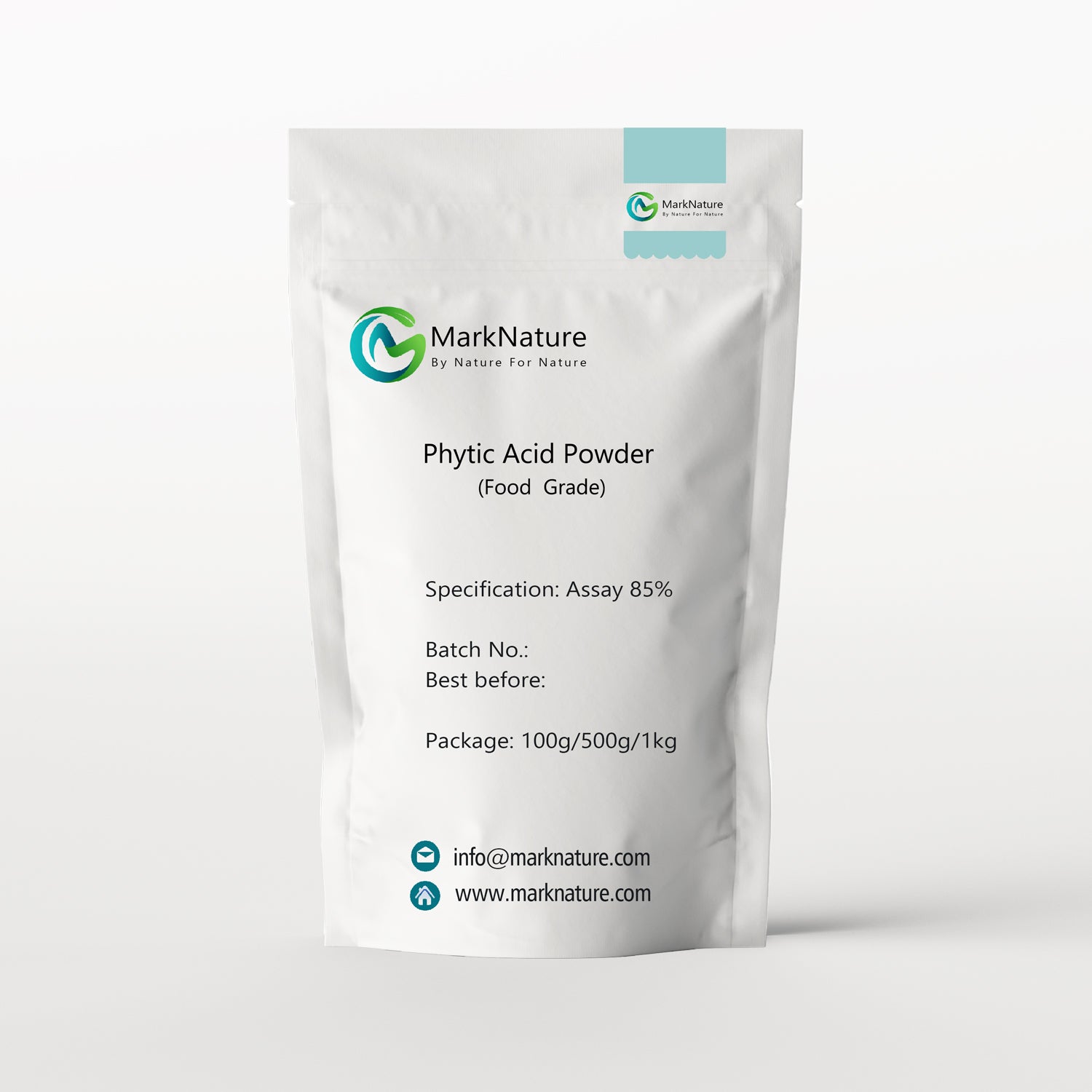Description
MarkNature's Phytic Acid Powder, derived from natural rice bran through meticulous purification and low-temperature vacuum spray drying, presents a potent plant-based component. Phytic Acid, also known as inositol hexakisphosphate (IP6) or inositol polyphosphate, embodies the essence of organic phosphorus storage within plants. Encapsulating the rich nutritional content found in grains and plant fibers, it manifests as insoluble calcium and magnesium salts known as Phytin.
Distinguished by its superior purity and heightened bioactivity, this solid formulation stands out in comparison to liquid Phytic Acid. Its unique processing methodology ensures a concentrated and potent end product, maintaining the essence of its natural source. Moreover, the solid form not only simplifies transportation and storage logistics but also assures enhanced safety measures.
Key Features:
- Derived from natural rice bran via filtered purification methods
- Concentrated and spray-dried using low-temperature vacuum processes
- High purity and bioactivity compared to liquid Phytic Acid
- Enhanced safety and ease of transport and storage
Specification:
CAS No: 83-86-3
EINECS No.: 201-506-6
M.W.: 660.03636
Chemical Formula: C6H18O24P6
Synonyms:
Inositol Hexaphosphate; IP6; 6 phosphates ester of inositol; phytate; myo-inositol 1,2,3,4,5,6, hexakisphosphate
|
Appearance: |
White crystalline powder |
|
Assay (as C6H18O24P6): |
85.0% Min. |
|
Inorganic Phosphorus : |
0.02% Max. |
|
Moisture: |
10% Max. |
|
Chloride: |
0.02% Max. |
|
Sulfate: |
0.02% Max. |
|
Calcium: |
0.02% Max. |
|
Heavy metals (as Pb): |
0.003% Max. |
|
Arsenic (As): |
0.0003% Max. |
|
Transparency |
95% Min. |
Application:
Phytic acid's standout feature lies in its robust chelating properties, serving as a potent antioxidant and antimicrobial agent applicable across various sectors including biological, food, cosmetic, and industrial realms.
Its diverse applications encompass key sectors. In the realm of healthcare, it contributes to endodontics, adhesive development, preventive and regenerative dentistry, and enhances the performance of dental materials. Expanding beyond, it plays a pivotal role in treating heavy-metal-contaminated waste and recovering radionuclides from polluted water. Additionally, it contributes to the development of modified electrodes for cadmium and lead detection, and as a metal coating to prevent rust formation and corrosion.
d lead detection, and metal coating for inhibiting of rust formation and corrosion.

